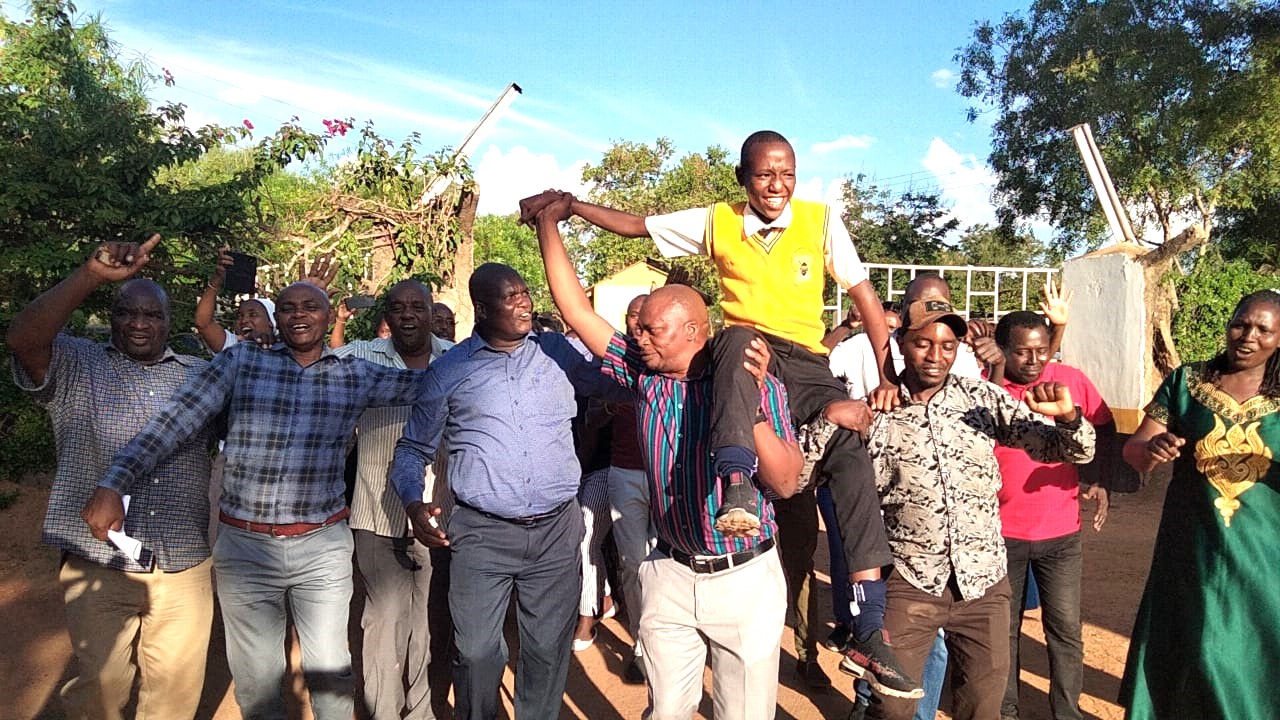Schools that register peak performance through genuine means, focus on fattening the head, as they cut or reduce the size of the tail. The former means that they push high flyers in the candidate class to bring out their best. While the latter means: they strive to assist students who look low and slow in class. How do they do it? They focus on some Best Academic Practices.
- Pair them with high achievers
Pairing up learners enhances peer teaching, which is a content mastery strategy. High achievers should not see it as a sheer waste of time. For both occidental and oriental knowledge acknowledge, those who do not know learn, but those who know teach. Again, a candle cannot lose light by lighting another candle. In fact, it generates more light into the room.
Weak learners can tap a lot from their peers who are peak performers. For the sake of disclosure. I reminisce when we were candidates poised for KCSE, I was weak than weakness itself in Math, but pairing up with a certain student who knew Math like the back of his hands, propped up my poor performance.
- Direct them to Form One and Two topics
When you see a student scoring dismal grades like Ds and Es, then it means that they also experience insuperable problems in mastery of topics that were taught in Form One and Two. Therefore, going back there to polish pale parts can save such a student from poor performance. Teachers achieve this ambit by serving more Random Assessment Tests (RATs).
In the recent past, the polymath Paul Wanyonyi penned something worth some allusion. He postulated that if a student only grasps Form 1 work, s/he stands a chance to a score D+ (plus). If a student masters Form 1 and 2 content it is possible to score a C (plain). Mastery of Form 1, 2 and 3 content can entice a B- (minus). Based on this brilliant thought, it is clear like crystal that Form 4 work help candidates to garner grade A.
What is the validity of this argument? A critical analysis of the KCSE 2019 confirms it. Ostensibly, experts assert that it was 25% Form 1 work. 25% Form 2 work. 25% Form 3 work. 25% Form 4 work. Candidates who mastered Form One and Two work, escaped the D+ (plus) and below mark. High achievers also lost it because to them, there was no need to focus on Form One and Two work. That is how they sadly lost the glamourous A’s.
- Help them identify simple areas they can score free marks
Though the concept or content may look challenging, it is also true that there are areas easy to grasp. That is generally in all the subjects tested in national exams. In addition, when doing exams, students should put plenty of premium on questions they can attempt with a lot of ease. It is imperative to note that passing exams is not about knowing everything in a particular subject. Success in any sphere of life demands that we know some specific buttons to press. It is hard work blended with smart work..
- Teach them the art of examination
In most cases, it is incumbent upon subject teachers, experts and examiners: to train candidates on the art of examination. This encompasses academic, spiritual and psychological preparation for exams.
Then, there is correct interpretation of questions, avoiding silly mistakes and knowing how to plot work on paper. There is the exigent need to steer clear on examination trends, format of exams and exam skills.
Teachers should focus on Tables of Specification (ToS) or Test Blueprint. They should make learners pay meticulous attention to marks allotted to questions and points required. Candidates need in-depth training on how to answer questions in the required depth and breadth.
- Encourage them to focus on all forms of consultation
Consultation is one of the cogent content mastery strategies we talk about here and there in our nation-wide academic caravans. It can be one-on-one conferencing, where students visit offices to consult teachers. It can take the form of class consultation, where learners ask quality questions in class either during or at the tail-end of the lessons. It is also important to embrace group consultation and peer consultation.
- Encourage them to take remedial lessons seriously
Remedial lessons are useful to students who are struggling because teachers can focus on problematic areas requested by such students. In a larger sense, it is during the remedial lessons that teachers endeavour to address areas performed poorly in the previous exams, areas pointed out in the past KCSE papers and KNEC reports. Then, during remedial lessons, tutors teach both backward and forward. Therefore, when teachers expand learning by allotting ample time for remedial lessons, they achieve the stupendous strategy I can christen: ‘Teach, test and re-teach’.
- Prepare them on the Table of Specification (ToS)
Table of Specification (ToS) also known as the Test Blueprint focuses on ‘a must-come-areas’. It is imperative for subject teachers to look at every topic in various subjects and point out ‘must-come-areas’, and prepare candidates adequately on these areas. This absolutely, will be of help to students who look low and slow.
- Help them set realistic targets
For aspiring high achievers, they can begin with a target of a D+ (plus) in the core subjects, and target a C (plain) and above in the optional subject.
- Encourage them not to give up
Both students and the teachers should not give up. Ideally, we cannot measure our success by how high we go up in life, but how many times we bounce back after we fall down. Students who are at the skid-row of academic performance require constant encouragement.
Failure in any exam is not the end of life. It does not mean the chapter is closed, fate is tightly sealed, and the game is lost. In actual sense, all of us can remember the story of the four leprous men recorded in 2 Kings 7:3-10.
Because leprosy was a dreadful disease, they were thrown out of the city to wait for their death. Luckily, they jolted to consciousness and asked one another, “Why should we sit here until we die?” When the four men who were sick and weak took a leap of faith, and started to move, God multiplied their simple steps. When the Syrians heard their movement, they thought Israelites had hired the Egyptian and Hittite army, superpowers in those distant days. Therefore, they fled from the camp. Little did they know that they were running away from weak and sick men.
The four men went there. They ate until they got sated and took back glad tidings to Israel. They saved Israelites from whistling hunger, bringing to pass the prophetic declaration of Elisha: Tomorrow, at a time like this, one tin of floor shall sell at a shekel. That is how God works. We plant his seeds in weakness but they sprout out in power. He gives strength to the weak. He uses the weak to ashame the strong. He heals the sick. When we do the ordinary, He does the extraordinary. When we do the natural, He does the supernatural. When we do our best, He does the rest.
Some candidates, who look low and slow, are the ones who are going to pass exams with flying colours. They will matriculate into good colleges to do good courses, and eventually help their relatives in future. No student is a fool. Every student carries the hope and help of many people. Being that education is an investment, God will cause good returns to emerge.
© Victor Ochieng’
The writer rolls out talks and training services on Best Academic Practices.
vochieng.90@gmail.com. 0704420232
Get more stories from our website: Education News
You can also follow our social media pages on Twitter: Education News KE and Facebook: Education News Newspaper for timely updates.





